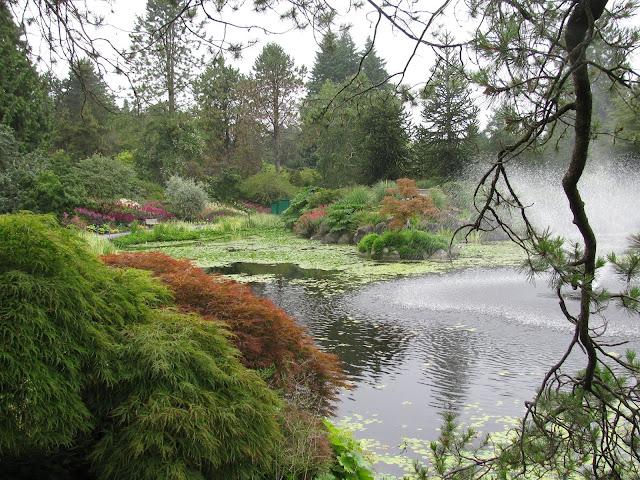This time it's Vancouver's VanDusen Botanical Garden.
Remember the art students?
They've thronged into VanDusen and are particularly taken with the sculptures of famous botanists along the margins of a small rose garden. And who could resist a particular "favourite son" of West Coast botanical legend, Archibald Menzies.
Distinguished looking dude, isn't he? -- with a distinguished track record:
Just think:-- He identified and recorded our cherished Arbutus tree.
AND one of my all-time favourite BC wildflowers, Youth-on-Age, growing here in the spring just inside my front gate.
It's said that Menzies and Captain Vancouver became shipboard enemies -- maybe because of the 10x12 foot greenhouse the Royal Horticultural Society sent along for Menzies to fill. Or maybe because Captain Vancouver was prone to be as irascible as Captain Ahab and wasn't amused at losing some of his deck space to a greenhouse. Nonetheless, when the ship's official doctor became ill himself, Doctor Menzies saved the day and brought the crew home safely -- though it's said that all the greenhouse plants died en route.
But never mind. Menzies' noble features were worth recording in a quick cardboard study done with one day's leftover paints.
And then an art student edged into a preliminary sketch.
Add some plants for Dr. Menzies and a sketchbook for the art student, and away things went:
As always, lots to learn, and the distinguished physician/botanist can take a bow with "Dr. Menzies Holds the Pose." (copyright 2019)
Before leaving Dr. M. to the peace and quiet of this corner of the gardens, it should be noted that he was also the first to catalog the giant, thick-barked Pseudotsuga menziesii -- commonly known as the Douglas fir. Misnomer times two -- since it's not a fir but a pine; and it's named for the slightly later botanist-explorer David Douglas solely because he identified its commercial value!!!























